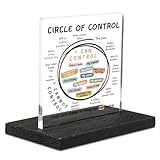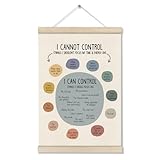Mental Control
Often the difference between winning and losing depends on your mental control. Getting and keeping your head together can be much easier if you use some of the tools of sports psychology: 1) Develop self-confidence; 2) use mental imagery, and; 3) control doubt and negative thoughts. These techniques help you develop and master mental control. Sports psychology is a large field requiring many years of study. In climbing, especially climbing competitions, routes are designed at the peak of a climber's ability. This information is not all-inclusive and is intended to provide a general overview of gaining mental control to improve your performance and spark your further personal study.
Develop Self-confidence to Enhance Mental Control.
A climber's self-confidence is probably the greatest asset in developing your mental control over your body's reaction to stress. Self-confidence doesn't happen by simply deciding to be confident - it takes a deliberate and planned effort. Self-confidence is not a matter of "fooling" yourself into believing something false. Just the opposite - it is based on accurately knowing yourself. Self-confidence allows you to take appropriate risks and climb at the top of your ability.
The most effective way to build self-confidence is by setting performance-based goals. Set attainable and measurable performance goals and make sure you achieve them. Then set new goals and achieve them. Through this process you learn your own abilities. By knowing your own capabilities you avoid surprise failure and develop confidence in yourself. Believing in yourself helps you develop mental control.
Your goals to attain mental control should be measured in terms of performance, not achievement. An example of an achievement goal is: "win the competition". This is not a good performance based goal. Examples of performance based goals are: "Increase pull-ups by 1 per week"; or, "increase endurance training by 1 minute per session"; or "increase dead-hang time by 10 seconds per week", etc. There are many aspects to achieving mental control to improve your climbing performance. Develop as many performance based goals as you can manage. Design your goals to be achievable within about a week or two weeks time. This will give you a sense of accomplishment, confidence, and help you develop a keen sense of your own abilities.
Mental Imagery (described below) is also useful for building self-confidence and control. This is useful if your lack of self-confidence or other "mind game" factors are interfering with your ability to achieve a goal. However, a note of caution. It is possible to use imagery to improperly build a level of over-confidence. Using imagery without rationally considering your actual abilities can lead to over-confidence and unexpected failure, which will cause a loss of confidence. Over-confidence is just as bad as a lack of confidence - maybe worse. Over confidence does not lead to mental control, it is a misreading of your own ability. If you are over-confident you will not give the climb 100% effort and may lead you to attempt something that you are not capable of doing. It can lead to an unexpected failure, which can destroy your self-confidence.
Self-confidence should come from a realistic understanding of your abilities based on incrementally achieving performance-based goals.
Mental Control using Imagery and Positive Thinking.
Using imagery, you imagine smooth controlled climbing, proper rests, shaking, clipping, breathing, good technique, etc… all the way to the top. Imagery can and should be used during previews, before a difficult move, at night in bed, waiting in a line at the store, on a bus or passenger in a car (but not as driver). Think and imagine yourself climbing and moving like a climber you admire - or visualize yourself making a particular move. Visualize the feeling, momentum, and balance. Visualize only correct climbing technique and form. Gain mental control of yourself and the climbing route by focusing and creating positive mental imagery.
Visualizing reinforces climbing movement in your mind - so use it to reinforce good movement. Visualizing is training for your mind. Do do not dwell on bad moves. Analyze what went wrong then visualize the correct movement from the beginning of the sequence through the end of the section. Imagine the feeling of the holds/rock, your momentum, your breathing, where you chalk up - be as vivid with your imagery as you can. It is a skill that needs to be developed just like physical skill.
Imagery can also be used to help you relax and lower your stress level. This can be helpful in competitions or in many other situations in climbing. Imagine a peaceful, relaxing, happy or fun place. Make it as vivid as possible by visualizing every detail, the warm sun, feeling of joy, smells… every detail that goes with your "happy place". Use this imagery technique to reduce stress and maintain mental control.
Imagery can be used to push your limits, for specific moves, for general technique, to break through a mental block, to reduce stress, or to build up your self-confidence. Be aware that imagery can be used to an unhealthy extreme. Use imagery and positive thinking within realistic boundaries to push yourself to new heights and break through barriers. This is an effective tool when used correctly.
Mental Control over Doubt and Negative Thoughts.
In the same way positive imagery "teaches" your mind through a visualized reinforcement, negative thoughts also teach your mind - the wrong thing. Get control of your mental thoughts. Make a conscious point not to allow negative thoughts to dominate. Answer negative thoughts with positive thoughts.
Sometimes negative thoughts are difficult to get out of your head. I may help to physically speak the positive out loud several times. If you are in a crowd or around other people do it sub-vocally. It is a stronger reinforcement when spoken. Respond to negative thoughts with positive thoughts based on clear and rational assessments of your known ability.
Become aware of your thoughts. Normally thoughts will come and go and you will hardly notice. Watch for feelings of inadequacy, criticism, feelings of stress, worry. Awareness is the first step to gaining more mental control. As you become more aware of your thoughts you can learn to control them.
But how do you not think of something? If someone says "do not think of a red balloon", you immediately visualize a red balloon whether you want to or not. Not thinking of something is more difficult than thinking about something. When you get a thought that is counter productive, make a conscious effort to visualize it's opposite. Speak the opposite if possible, or at least speak it sub-vocally. For example: "red balloon": now think of a green balloon and say "green balloon" out loud. It is now green. Use this technique to conquer doubt, negative thoughts and reinforce your good technique, confidence, and positive self-image. You are what you think, so think what you want yourself to be.
Summary of Mental Control.
These are simple tools you can use to help break through mental barriers, maintain mental control under stressful situations and build new self-confidence. It may well take you to a new level of climbing. Top athletes, coaches and trainers in every sport agree the proper application of sports psychology provides a significant boost in performance level. Self-confidence will help you climb at your best. Using mental imagery and controlling doubt will help you press through mental barriers. Developing these simple techniques are as important as your physical training.



![El método Silva de control mental [The Silva Mind Control Method]](https://m.media-amazon.com/images/I/41MO2M0221L._SL160_.jpg)







